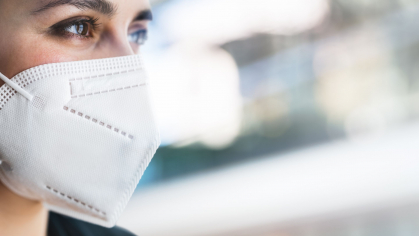Rutgers Pediatrician Discusses How to Keep Children Safe at School

Expert urges vigilance as New Jersey stops some in-person classes due to COVID-19 outbreaks
As more New Jersey school districts face COVID-19 outbreaks and some are forced to stop in-person classes, many health care experts worry about what to expect as we head into the flu season.
Pediatrician Lawrence Kleinman, professor, vice chair for academic development and chief of the Division of Population Health, Quality and Implementation Science (PopQuIS) at Rutgers Robert Wood Johnson Medical School, has published several studies about the risks children face with COVID-19. He talks about how to keep children safe at school during the pandemic.
Are children safe in schools during the pandemic?
Congregating activities are intrinsically risky. Since there is no such thing as a safe space, each school opening requires vigilance when it comes to COVID-19. Each school that opens is a test of whether it is better for children to receive their education in person despite a risk of catching a contagious disease or to eliminate the risk of catching the disease at school even if it means that children’s education may suffer, there would be increased burden on the adults in the household and the physical and mental health risks associated with keeping kids at home. The balance is thrown off when the virus is more prevalent or positivity rates of testing are high. In some ways, each school's opening needs to be thought of as a careful attempt to demonstrate the theory that on balance it is better to have that school open than to keep children at home.
What should schools do to keep children safe?
While mitigating children’s risk will differ for individual schools, when there is an uptick in COVID-19 in a given community, it could create a situation where it is unreasonable to expect schools to prevent transmission even while practicing social distancing and mask-wearing.
To protect children and families, it is critical to respond to emerging data about high overall positivity rates or to small clusters of even mild or asymptomatic infections in children, teachers or their households. These high numbers should be enough to warrant a pause or cessation of in-person learning. Further children, families and teachers who experience higher than typical risks, such as due to chronic illness or aged relatives in the household, should be allowed to opt out of in person schooling.
In general, schools need to apply three strategies when they open for in-person learning to reduce children's exposure to the virus. First, schools must completely exclude children, teachers or staff identified as potentially having the virus, such as those exposed to COVID-19 or displaying potential symptoms of COVID-19.
Second, schools must mitigate opportunities for contagiousness through behavioral measures like social distancing and mask-wearing, frequent and available handwashing and hand sanitizing, and also via infection control measures like frequent cleaning of surfaces and restrooms, ventilation with outside air and air filtration or other means of sanitizing airflow.
Third, they must also reduce the threat of one or more individuals cross contaminating many. Groups of the same students and teachers should be kept together in the same classrooms (terms like pods and cohorts have been used to describe this). Schools should do their best to reduce or eliminate the opportunity for exposures to multiply or super spreading as may happen when students are dispersed into various classrooms with different groups of children, or when even a group of students goes room to room or specialists come to them, room to room. This suggests that it can be protective when schools are able to deliver some education virtually even to students who are in the classroom. When specialists need to go from room to room, as may occur especially to kids with special needs, even more attention needs to be paid to hand hygiene, use of protective gear and the like.
What should communities or states do when infection rates start to climb?
It makes sense to close schools when the number of infections in a community starts to rise. I would say it is better to close too soon than to close too late. This is a time-tested approach and failure to do so can have profound and devastating consequences. This is a lesson we can learn from the contrasting experience of various cities in the 1918 flu epidemic.


